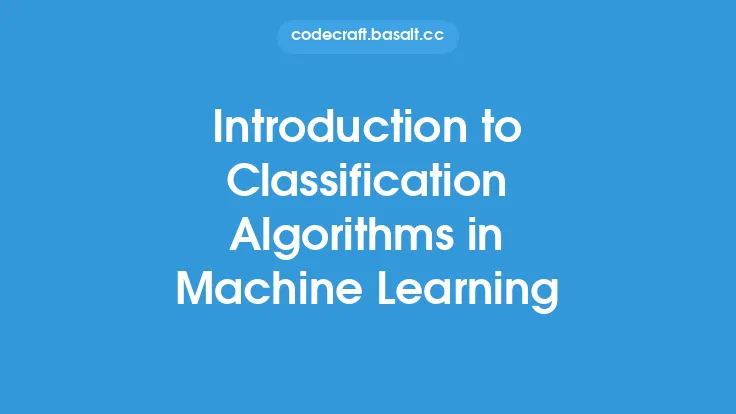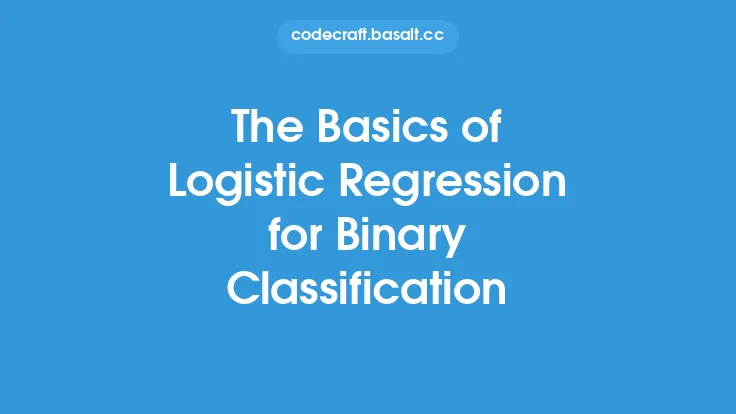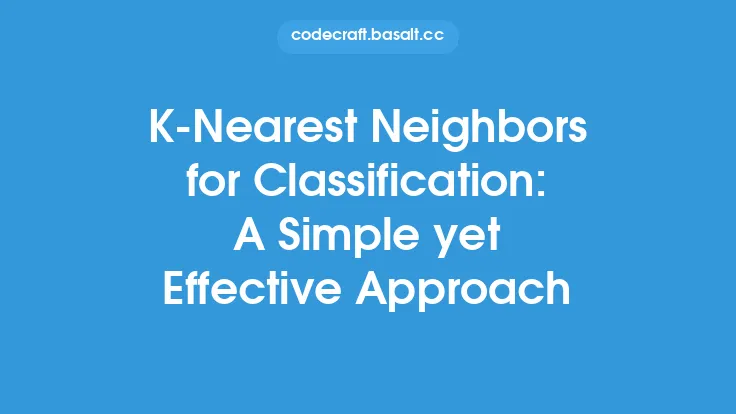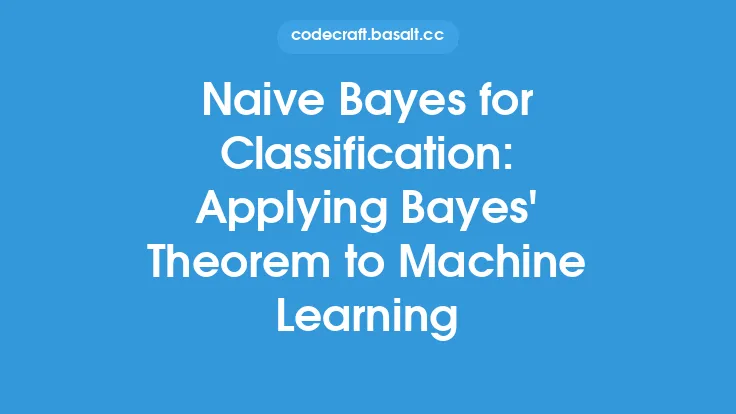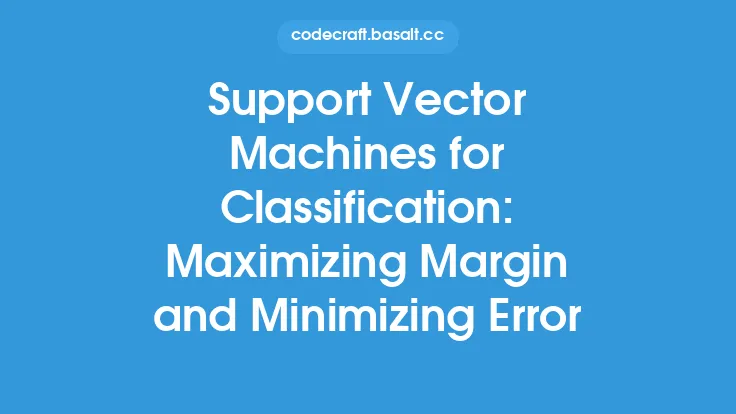Supervised learning is a fundamental concept in machine learning, and when it comes to classification tasks, it plays a crucial role in enabling machines to learn from labeled data and make accurate predictions. In this context, supervised learning for classification refers to the process of training a machine learning model on a dataset that contains input features and corresponding labels, with the goal of learning a mapping between the inputs and outputs. This mapping can then be used to predict the labels of new, unseen data.
Introduction to Supervised Learning
Supervised learning is a type of machine learning where the model is trained on labeled data, meaning that each example in the dataset is accompanied by a target label or output. The goal of supervised learning is to learn a function that maps the input data to the corresponding output labels. In the context of classification, the output labels are categorical, and the model learns to predict the probability of each class given the input features. Supervised learning is a powerful approach to machine learning, as it allows models to learn from large datasets and make accurate predictions on new, unseen data.
Key Components of Supervised Learning for Classification
There are several key components of supervised learning for classification, including the dataset, the model, the loss function, and the optimization algorithm. The dataset consists of input features and corresponding labels, which are used to train the model. The model is a mathematical representation of the relationship between the input features and output labels, and it can take many forms, such as linear models, decision trees, or neural networks. The loss function measures the difference between the model's predictions and the true labels, and it is used to evaluate the model's performance. The optimization algorithm is used to adjust the model's parameters to minimize the loss function and improve the model's performance.
Types of Classification Problems
There are several types of classification problems, including binary classification, multi-class classification, and multi-label classification. Binary classification refers to problems where there are only two classes, such as spam vs. non-spam emails. Multi-class classification refers to problems where there are more than two classes, such as handwritten digit recognition. Multi-label classification refers to problems where each example can have multiple labels, such as text classification where a document can belong to multiple categories. Each type of classification problem requires a different approach to modeling and optimization.
Model Evaluation Metrics
Evaluating the performance of a classification model is crucial to understanding its strengths and weaknesses. There are several metrics that can be used to evaluate a classification model, including accuracy, precision, recall, F1 score, and area under the receiver operating characteristic (ROC) curve. Accuracy measures the proportion of correctly classified examples, while precision measures the proportion of true positives among all positive predictions. Recall measures the proportion of true positives among all actual positive examples, and F1 score is the harmonic mean of precision and recall. The ROC curve plots the true positive rate against the false positive rate, and the area under the curve measures the model's ability to distinguish between positive and negative classes.
Overfitting and Regularization
Overfitting is a common problem in supervised learning for classification, where the model becomes too complex and learns the noise in the training data rather than the underlying patterns. This can result in poor performance on new, unseen data. Regularization techniques, such as L1 and L2 regularization, can be used to prevent overfitting by adding a penalty term to the loss function that discourages large model weights. Another approach to preventing overfitting is to use early stopping, which involves stopping the training process when the model's performance on the validation set starts to degrade.
Handling Imbalanced Datasets
Imbalanced datasets, where one class has a significantly larger number of examples than the others, can be challenging for classification models. There are several techniques that can be used to handle imbalanced datasets, including oversampling the minority class, undersampling the majority class, and using class weights. Oversampling the minority class involves creating additional copies of the minority class examples, while undersampling the majority class involves removing some of the majority class examples. Class weights involve assigning different weights to each class, with the minority class typically receiving a higher weight.
Real-World Applications
Supervised learning for classification has many real-world applications, including image classification, speech recognition, and natural language processing. Image classification involves classifying images into different categories, such as objects, scenes, or actions. Speech recognition involves classifying audio signals into different words or phrases, while natural language processing involves classifying text into different categories, such as sentiment or topic. Other applications of supervised learning for classification include medical diagnosis, credit risk assessment, and customer segmentation.
Future Directions
Supervised learning for classification is a rapidly evolving field, with new techniques and algorithms being developed continuously. Some of the future directions in supervised learning for classification include the use of deep learning models, such as convolutional neural networks and recurrent neural networks, and the development of more robust and efficient optimization algorithms. Another area of research is the use of transfer learning, which involves using pre-trained models as a starting point for new classification tasks. Additionally, there is a growing interest in using supervised learning for classification in conjunction with other machine learning techniques, such as unsupervised learning and reinforcement learning.
